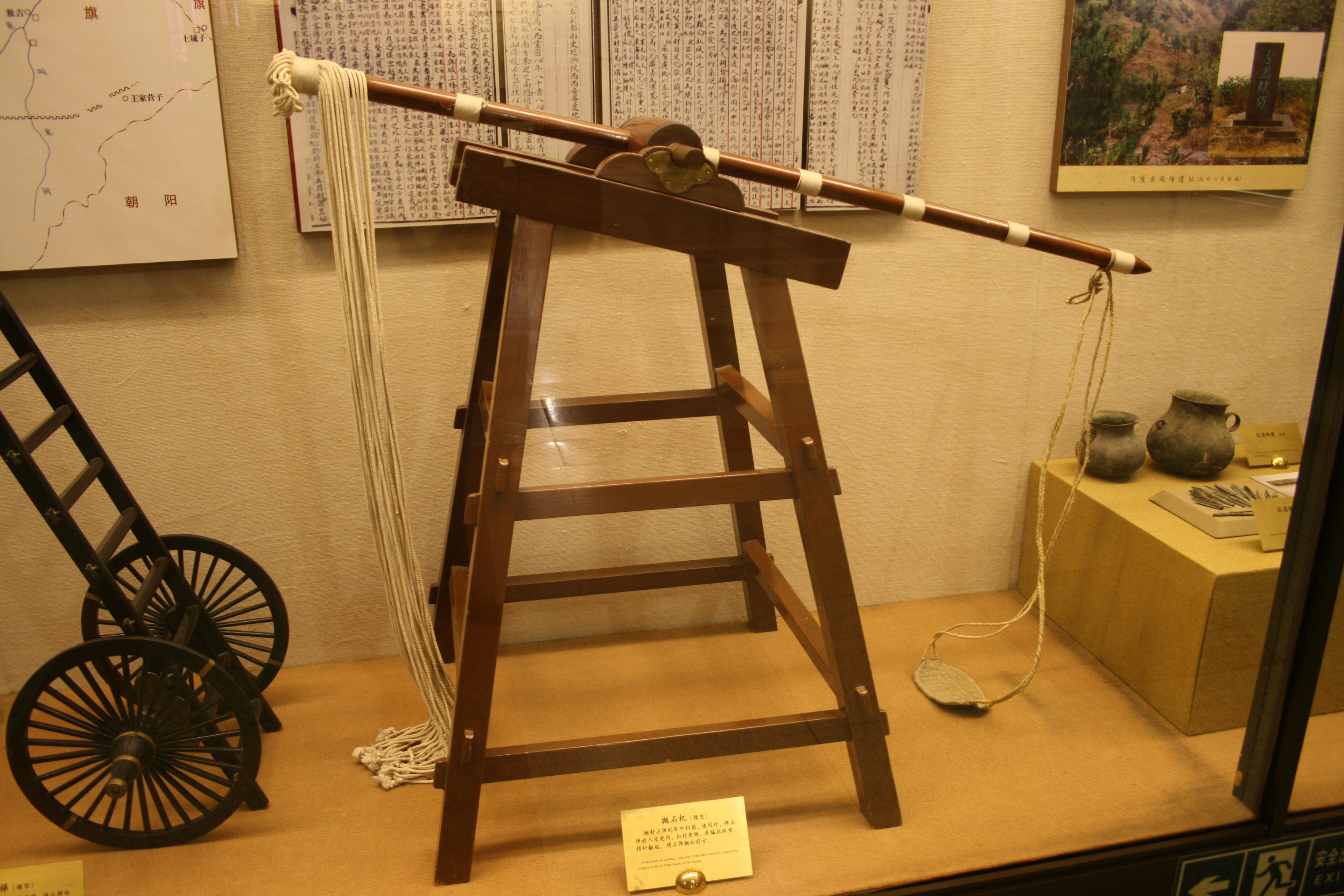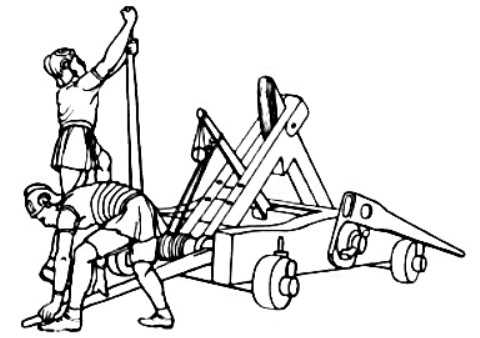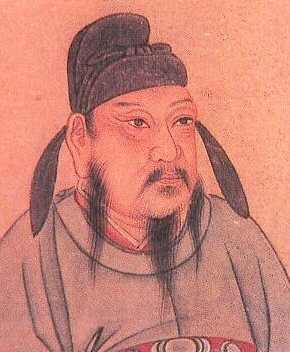|
Mangonels
The mangonel, also called the traction trebuchet, was a type of trebuchet used in Ancient China starting from the Warring States period, and later across Eurasia by the 6th century AD. Unlike the later counterweight trebuchet, the mangonel was operated by people pulling ropes attached to one end of a lever, the other end of which had a sling to launch projectiles. Although the mangonel required more men to function, it was also less complex and faster to reload than the torsion-powered onager which it replaced in early Medieval Europe. It was replaced as the primary siege weapon in the 12th and 13th centuries by the counterweight trebuchet.Chevedden, Paul E.; et al. (July 1995). "The Trebuchet". Scientific American: 66–71. http://static.sewanee.edu/physics/PHYSICS103/trebuchet.pdf . Original version. A common misconception about the mangonel is that it was a torsion siege engine. Etymology The word ''mangonel'' was first attested in English in the 13th century, it is borro ... [...More Info...] [...Related Items...] OR: [Wikipedia] [Google] [Baidu] |
Trebuchet
A trebuchet () is a type of catapult that uses a hinged arm with a sling attached to the tip to launch a projectile. It was a common powerful siege engine until the advent of gunpowder. The design of a trebuchet allows it to launch projectiles of greater weights and further distances than a traditional catapult. There are two main types of trebuchet. The first is the ''traction trebuchet'', or mangonel, which uses manpower to swing the arm. It first appeared in China by the 4th century BC. It spread westward, possibly via the Avars, and was adopted by the Byzantines, Persians, Arabs, and other neighboring peoples by the sixth to seventh centuries AD. The later, and often larger and more powerful, counterweight trebuchet, also known as the counterpoise trebuchet, uses a counterweight to swing the arm. It appeared in both Christian and Muslim lands around the Mediterranean in the 12th century, and was carried back to China by the Mongols in the 13th century. "Although this is ... [...More Info...] [...Related Items...] OR: [Wikipedia] [Google] [Baidu] |
Torsion Mangonel Myth
The torsion mangonel myth, or simply the myth of the mangonel, is the belief that the mangonel (or traction trebuchet) was a torsion siege engine which used the tension effect of twisted cords to shoot projectiles. As an extension of the concept of a torsion-powered mangonel, some believe it was used as a siege weapon until the arrival of gunpowder artillery or that it was the only or primary siege artillery before gunpowder. In reality, the vast body of contemporary evidence in art and documents point to the mangonel being a machine operated on manpower-pulling cords attached to a lever and sling to launch projectiles. Evidence for the usage of torsion siege weapons such as the onager exist only up until the 6th century, when they were superseded by traction artillery (with the exception of the springald). Despite a significant body of research dating as far back as the 19th century pointing to the contrary, "it has not stopped the transmission of the myth to the present day." ... [...More Info...] [...Related Items...] OR: [Wikipedia] [Google] [Baidu] |
Torsion Siege Engine
A torsion siege engine is a type of siege engine that utilizes torsion to launch projectiles. They were initially developed by the ancient Macedonians, specifically Philip II of Macedon and Alexander the Great, and used through the Middle Ages until the development of gunpowder artillery in the 14th century rendered them mostly obsolete. History Greek Preceding the development of torsion siege engines were tension siege engines that had existed since at least the beginning of the 4th century BC, most notably the gastraphetes in Heron of Alexandria's ''Belopoeica'' that was probably invented in Syracuse by Dionysius the Elder. Though simple torsion devices could have been developed earlier, the first extant evidence of a torsion siege engine comes from the Chalcotheca, the arsenal on the Acropolis in Athens, and dates to c. 338 - 326 BC. It lists the building's inventory that included torsion catapults and its components such as hair springs, catapult bases, and bolt ... [...More Info...] [...Related Items...] OR: [Wikipedia] [Google] [Baidu] |
Song Dynasty
The Song dynasty ( ) was an Dynasties of China, imperial dynasty of China that ruled from 960 to 1279. The dynasty was founded by Emperor Taizu of Song, who usurped the throne of the Later Zhou dynasty and went on to conquer the rest of the Five Dynasties and Ten Kingdoms period#Ten Kingdoms, Ten Kingdoms, ending the Five Dynasties and Ten Kingdoms period. The Song frequently came into conflict with the contemporaneous Liao dynasty, Liao, Western Xia and Jin dynasty (1115–1234), Jin dynasties in northern China. After retreating to southern China following attacks by the Jin dynasty, the Song was eventually conquered by the Mongol-led Yuan dynasty. The History of the Song dynasty, dynasty's history is divided into two periods: during the Northern Song (; 960–1127), the capital was in the northern city of Bianjing (now Kaifeng) and the dynasty controlled most of what is now East China. The #Southern Song, 1127–1279, Southern Song (; 1127–1279) comprise the period following ... [...More Info...] [...Related Items...] OR: [Wikipedia] [Google] [Baidu] |
Li Shimin
Emperor Taizong of Tang (28January 59810July 649), previously Prince of Qin, personal name Li Shimin, was the second Emperor of China, emperor of the Tang dynasty of China, ruling from 626 to 649. He is traditionally regarded as a co-founder of the dynasty for his role in encouraging his father Li Yuan (Emperor Gaozu) to rebel against the Sui dynasty at Taiyuan, Jinyang in 617. Taizong subsequently played a pivotal role in defeating several of the dynasty's most dangerous opponents and solidifying its rule over China proper. Taizong is considered to be one of the greatest emperors in China's history, and henceforth his reign became regarded as the exemplary model against which all future emperors were measured. His era, the "Reign of Zhenguan" () is considered a Golden Age, golden age in ancient Chinese history and was treated as required studying material for future crown princes. Taizong continued to develop imperial examination systems. He asked his officials to be loyal t ... [...More Info...] [...Related Items...] OR: [Wikipedia] [Google] [Baidu] |
Luoyang
Luoyang ( zh, s=洛阳, t=洛陽, p=Luòyáng) is a city located in the confluence area of the Luo River and the Yellow River in the west of Henan province, China. Governed as a prefecture-level city, it borders the provincial capital of Zhengzhou to the east, Pingdingshan to the southeast, Nanyang to the south, Sanmenxia to the west, Jiyuan to the north, and Jiaozuo to the northeast. As of December 31, 2018, Luoyang had a population of 6,888,500 inhabitants with 2,751,400 people living in the built-up (or metro) area made of the city's five out of six urban districts (except the Jili District not continuously urbanized) and Yanshi District, now being conurbated. By the end of 2022, Luoyang Municipality had jurisdiction over 7 municipal districts, 7 counties and 1 development zone. The permanent population is 7.079 million. Situated on the central plain of China, Luoyang is among the oldest cities in China and one of the cradles of Chinese civilization. It is the earl ... [...More Info...] [...Related Items...] OR: [Wikipedia] [Google] [Baidu] |
Li Mi (Sui Dynasty)
Li Mi (; 582 – 20 January 619), courtesy name Xuansui (), pseudonym Liu Zhiyuan (), was a Chinese military general, monarch, poet, politician, and rebel. He was the leader of a rebel movement against the rule of the Chinese Sui dynasty. He initially was the strategist of the Sui general Yang Xuangan, who rebelled against Emperor Yang of Sui in 613 but failed. In 617, Li subsequently led a rebellion against Emperor Yang in his own right and killed Zhai Rang, seizing Zhai's troops. There was expectation that Li Mi would prevail over Sui forces and establish a new dynasty—so much so that even other key rebel leaders, including Dou Jiande, Meng Haigong ( 孟海公), Xu Yuanlang, and Zhu Can, were urging him to take imperial title. Even Li Yuan (soon to become the founder of the Tang dynasty as Emperor Gaozu) was writing him in supplicating terms that implicitly supported his imperial claim. Li Mi tried to gain control of the Sui eastern capital Luoyang, but his forc ... [...More Info...] [...Related Items...] OR: [Wikipedia] [Google] [Baidu] |
Emperor Taizong's Campaign Against The Western Regions
In the years following Tang Taizong's subjugation of the Eastern Turkic Khaganate, the emperor began to exert his military power toward the oasis city-states of the Tarim Basin (part of the area known in Chinese histories as the Western Regions). These states, populated by Tocharians, Tocharian and Saka peoples, were loosely allied with the Western Turkic Khaganate. In 640, Emperor Taizong sent the military commander Hou Junji to defeat and annex Gaochang (Karakhoja)—the first attempt by any Chinese dynasty to set up a permanent military and political presence in the region since Fu Jian (337–385), Fu Jian in the 4th century.Bo Yang, ''Outlines of the History of the Chinese'', vol. 2, pp. 513-515. In 644, after Karasahr (Yanqi)—an ally in the campaign against Karakhoja—turned against Tang and allied with the Western Turkic Khaganate, the Tang commandant at Karakhoja, , attacked and captured the King of Karasahr, , but Karasahr subsequently rebelled. In 648, the ethnic ... [...More Info...] [...Related Items...] OR: [Wikipedia] [Google] [Baidu] |
Zuo Zhuan
The ''Zuo Zhuan'' ( zh, t=左傳, w=Tso Chuan; ), often translated as ''The Zuo Tradition'' or as ''The Commentary of Zuo'', is an ancient Chinese narrative history traditionally regarded as a commentary on the ancient Chinese chronicle the '' Spring and Autumn Annals''. It comprises 30 chapters covering the period from 722 to 468BC, and focuses mainly on political, diplomatic, and military affairs from that era. For many centuries, the ''Zuo Zhuan'' was the primary text through which educated Chinese learned their ancient history. The ''Zuo Zhuan'' does not simply explain the wording of the ''Spring and Autumn Annals'', but rather expounds upon its historical background with rich and lively accounts of the history and culture of the Spring and Autumn period (771476 BC). The ''Zuo Zhuan'' is the source of more Chinese sayings and idioms than any other classical work, and its concise, flowing style served as a paragon of elegant Classical Chinese. Its tendency toward thi ... [...More Info...] [...Related Items...] OR: [Wikipedia] [Google] [Baidu] |
Ejin Banner
Ejin ( Mongolian: ; zh, s=额济纳旗) is a banner in the far west of Inner Mongolia, China. It is under the administration of Alxa League and is the westernmost county-level division of Inner Mongolia, bordering Gansu province to the west and Mongolia's Bayankhongor and Govi-Altai Provinces. Its seat is located at Dalaihob Town. To the west, it shares a border with Subei Mongol Autonomous County of Jiuquan, Gansu. Demographics History The area was historically the hunting grounds of the Xiongnu, before being acquired by the Han dynasty in BC 121. The ruins of the ancient city of Khara-Khoto, founded by the Western Xia, are located in Ejin. Ejin was incorporated into the Mongol Empire under Genghis Khan in 1226. During the Yuan dynasty, the area was home to nomadic Mongol populations. It was later incorporated into the Qing dynasty (1644–1912). Under the Republic of China, the area was under the jurisdiction of Ningxia province. The area fell under the control o ... [...More Info...] [...Related Items...] OR: [Wikipedia] [Google] [Baidu] |
Tang Taizong
Emperor Taizong of Tang (28January 59810July 649), previously Prince of Qin, personal name Li Shimin, was the second emperor of the Tang dynasty of China, ruling from 626 to 649. He is traditionally regarded as a co-founder of the dynasty for his role in encouraging his father Li Yuan (Emperor Gaozu) to rebel against the Sui dynasty at Jinyang in 617. Taizong subsequently played a pivotal role in defeating several of the dynasty's most dangerous opponents and solidifying its rule over China proper. Taizong is considered to be one of the greatest emperors in China's history, and henceforth his reign became regarded as the exemplary model against which all future emperors were measured. His era, the "Reign of Zhenguan" () is considered a golden age in ancient Chinese history and was treated as required studying material for future crown princes. Taizong continued to develop imperial examination systems. He asked his officials to be loyal to policies, not people, in order to e ... [...More Info...] [...Related Items...] OR: [Wikipedia] [Google] [Baidu] |
Barköl Kazakh Autonomous County
Barkol Kazakh Autonomous County (sometimes Barkul or Balikul in English) is a part of Hami, Hami Prefecture in Xinjiang and has an area of . It forms part of the China–Mongolia border (bordering the Mongolian provinces of Khovd Province, Khovd and Govi-Altai Province, Govi-Altai) on the county's north, while bordering Yizhou District, Hami, Yizhou District to the south, Yiwu County to the east and Changji Hui Autonomous Prefecture, Changji's Mori Kazakh Autonomous County to the west. Barkol was made an autonomous county on October 1, 1954. It is noted for camel breeding and horse breeding with the Barkol horse well known throughout China. Due to the large number of camels, which is unparalleled in China, the county is nicknamed the "county of ten thousand camels". History Barkol was a territory of Pulei country in ancient times. During the continuous Han–Xiongnu War, in 72 BC, Emperor Xuan of Han sent Zhao Chongguo as general of Pulei, together with Wusun to attack the Huns. Af ... [...More Info...] [...Related Items...] OR: [Wikipedia] [Google] [Baidu] |










